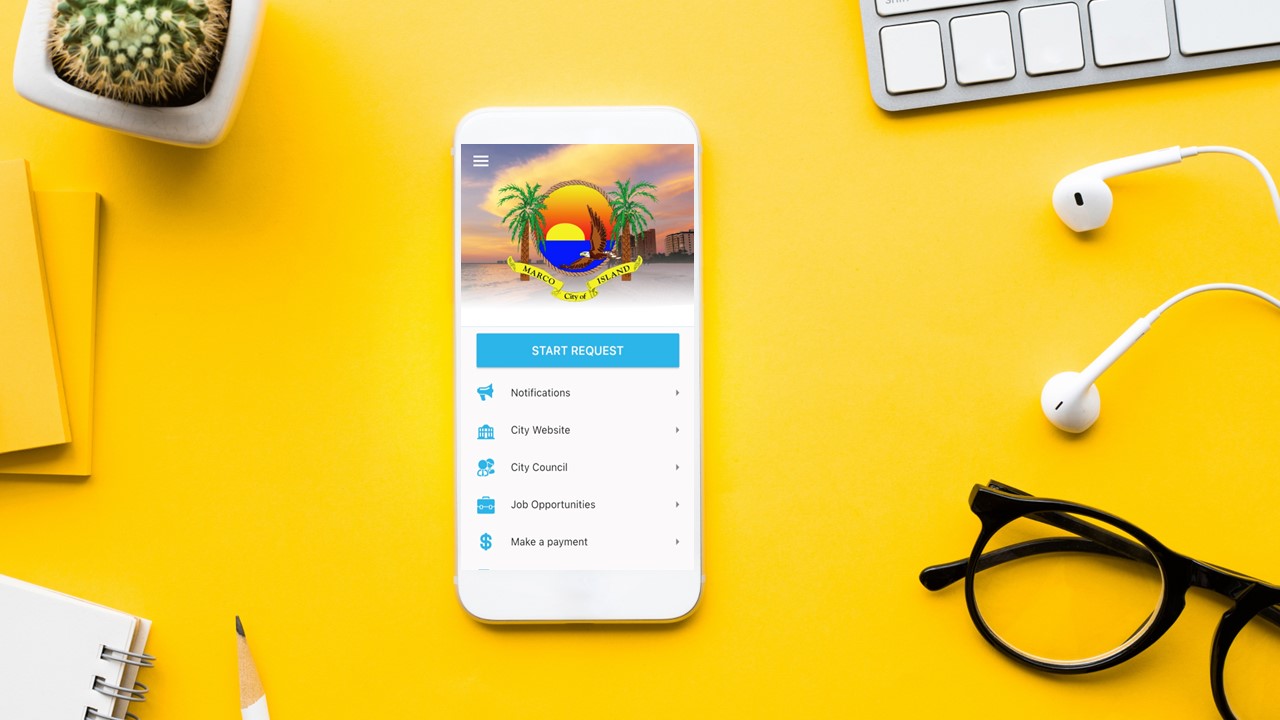
Keeping residents informed is an ongoing challenge for most communities. Many residents think local officials don’t communicate enough or provide enough information, even though the city may produce press releases, monthly email blasts, and post regularly on social media. Nevertheless, they want more.
Here on Marco Island, there has been a push for a hard-copy newsletter to be mailed to every home. This can be costly and time consuming, and the information may be obsolete by the time it reaches mailboxes. A few years ago, as I started researching the best ways to enhance our resident engagement, I proposed the idea of trying a municipal app to see if this added layer of communication would meet the needs and desires of our residents. It has been two years, and we have had great success leveraging this technology.
This article will outline the benefits of utilizing a mobile app and lessons learned for smooth implementation. If you are considering ways to enhance community engagement, keep reading.
What Exactly Is a Municipal App?
A municipal app is a software application, free of charge to users, that can be downloaded on a smartphone or tablet, giving cities and counties one more way to keep residents informed. The app also allows residents to report issues to their local government. For example, in the month of July, Marco Island sent 22 notifications to residents through the “MyMarco App”—everything from road closures and boil water notices to a tropical storm warning. We also received 53 reports from residents during that same period. The majority of these reports were directed to the police department and public works and included abandoned chairs on the beach, right of way obstructions, environmental violations, debris in the road, and drainage issues.
Things to Consider
In late 2021 and early 2022, I researched eight companies in my quest to improve our resident engagement. Some products were prohibitively expensive for our modest budget. Some vendors focused primarily on linking residents to the main website or providing a chat window to answer quick questions. Then there were a few companies that developed a customized smartphone application with links to the municipal website, integrations with GIS and other software systems, a function for residents to report problems, and push notifications to residents. This was exactly what I was looking for in a new engagement platform.
Marco Island is a mid-size retirement community in Southwest Florida, so I was concerned whether older residents would use the app and feel comfortable with this new form of communication. In December 2023, a marketing and data company named Razorfish conducted a study examining baby boomers’ openness to adopt new technologies. Their findings showed that boomers (generally ages 60–79) have an “early adopter” attitude toward technology and have confidence in using new technology. Seventy percent of boomers are eager to learn how to use new technologies and devices. This is to say, don’t shy away from using technology due to age demographics, but instead think about the reach of your communication. Having a multi-prong approach will ensure that at least one method of communication will reach your intended audience.
Speaking of a multi-prong approach, many communities rely on social media platforms. Depending on whether the city/county allows commenting, social media can get negative quickly and unfortunately it can be a hub of misinformation even while the community is trying to relay the facts. With an app, the local government can push out important information to residents and there is no response, just the information. Of course, we’re not trying to silence residents, which is why the reporting feature of the app is so important. If residents have a problem, they can report it through the app using a photo, description, and location data, and it will go to the appropriate department for action. This is a much more productive approach than having residents post complaints on social media.
On the other hand, utilizing an app is definitely not the same as mailing a glossy newsletter, but it is fast and easy for staff, and it gets important information to residents as quickly as possible. There may be a need for a glossy newsletter with long-term information like how to contact councilmembers or staff, but if you need to report a road closure or a boil water notice, an app notification is the way to go.
Maximize Staff Involvement to Ensure Success
Committing to a municipal app is just that—a commitment—and you will need the buy-in of department heads to ensure successful implementation and follow-through. For example, if a resident reports a cracked sidewalk, the project team should identify who that report will be sent to, who will be responsible for contacting the resident, who will address the issue, and who will close out the ticket. This could be one person, or it could be four different people depending on the size and structure of your local government. A designated project manager will keep things moving and make sure each department is answering information requests from the app developer and testing app features before the app goes live. The IT Director will also be essential for making sure the app is connected to both an Apple and Google developer account and integrating the app with your other software programs.
We spent three months in the development phase coordinating with the app software development team and our internal project team. Once it was all set up, there was one week of staff training and one week of testing. We spent a few weeks marketing the app to residents, businesses, and visitors through post cards, social media, a press release, and a newspaper advertisement with a QR code. We went live and launched the MyMarco App four months after signing the contract, and in our first month we had over 2,000 downloads. Now that we are two years into implementation, the process is seamless. We set an internal standard that requests should be responded to within three days and closed out within one week, and a few managers are assigned to check the reports and make sure we are meeting our goals.
Having a municipal app can really enhance resident engagement, but it will take time and commitment from staff. Once it’s in place, the time invested on the front end will pay off as residents experience two-way communication with their local government from the convenience of their phone.

CASEY LUCIUS, PhD, is assistant city manager of Marco Island, Florida, USA.
New, Reduced Membership Dues
A new, reduced dues rate is available for CAOs/ACAOs, along with additional discounts for those in smaller communities, has been implemented. Learn more and be sure to join or renew today!
